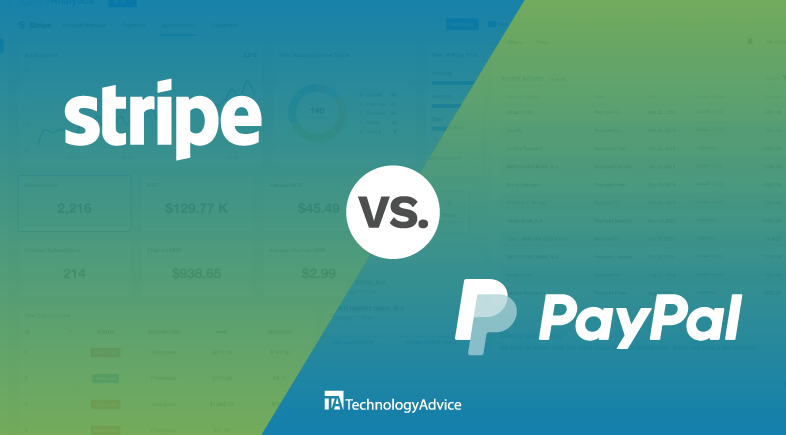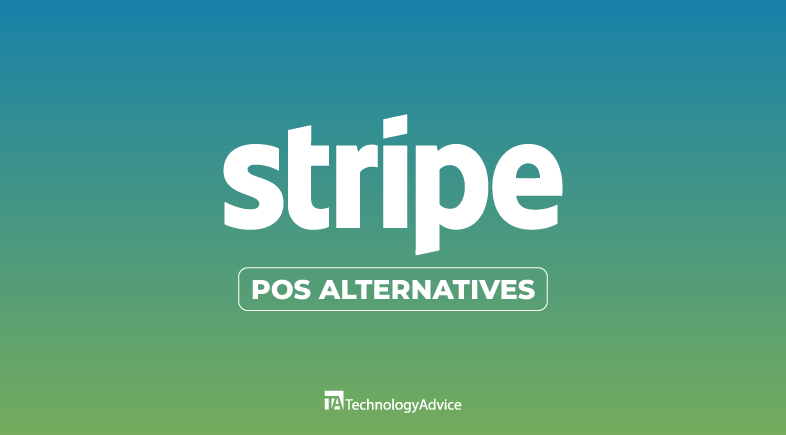Point-of-sale (POS) software providers offer different sets of POS features depending on the type of business that they support. And while having a long list of point of sale features available to use may seem ideal, paying for functionality that you hardly use can be a waste of business funds. The best approach is to know which features your business currently needs and only pay for those, while also being on the lookout for tools that the business may need in the future to grow.
Below is a non-exhaustive list of POS features for all businesses types:
Essential POS features
These are core point of sale features—must-haves that any POS system should provide regardless of industry and business size.
1. Inventory management
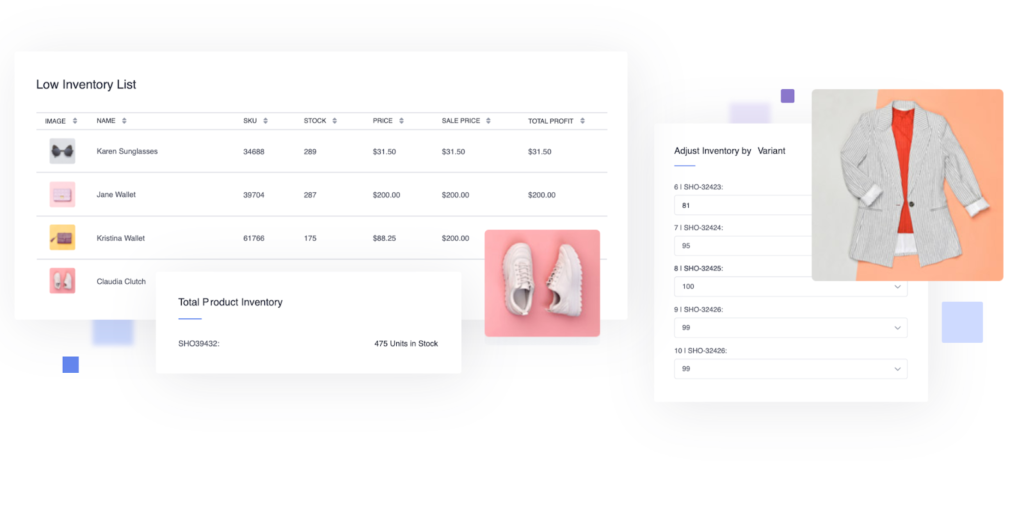
Without built-in inventory management, the POS is just a cash register. Inventory management allows users to upload and track their products on one platform. This also means that inventory records are updated in real time for any sales or returns. Digitizing inventory counts is another advantage of integrated inventory management, particularly if the system can be used on a mobile device and is equipped with a bar scanner.
Make sure that your POS software’s inventory management feature can:
- Allow product images
- Add product variants
- Import and edit product details in bulk
- Assist with stock/inventory counts
2. Customer profiles
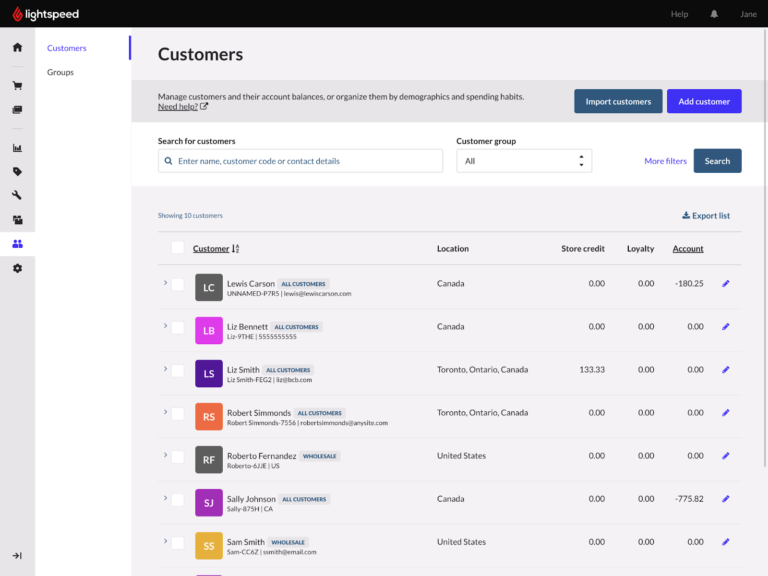
Most POS software comes with a customer relationship management (CRM) feature. This is where customer profiles are stored, along with data around purchases, shipping, contact, and payment information. In turn, customer records are used to build engagement through personalized loyalty programs and fine-tuned marketing campaigns.
You should choose a POS software provider that offers free CRM functionality, not as an add-on.
3. Checkout
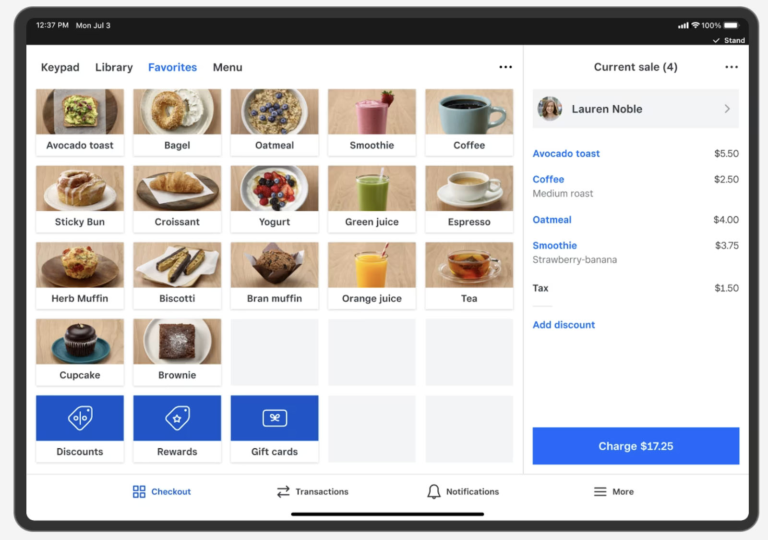
The checkout register is the POS’s user interface. On a traditional cash register, the interface would be buttons assigned for each product and various other functions. On modern POS systems, the interface is a touchscreen.
Using familiar touchscreen hardware, a modern POS software’s checkout terminal is designed for ease of use to help prevent long queues. It can be customized to display the most popular products and the most used functionalities for fast access to frequently used discounts, returns, and refunds. And, of course, this is where your POS system’s payment processing feature is directly integrated.
Read more: What Is a POS Terminal?
4. Payment processing
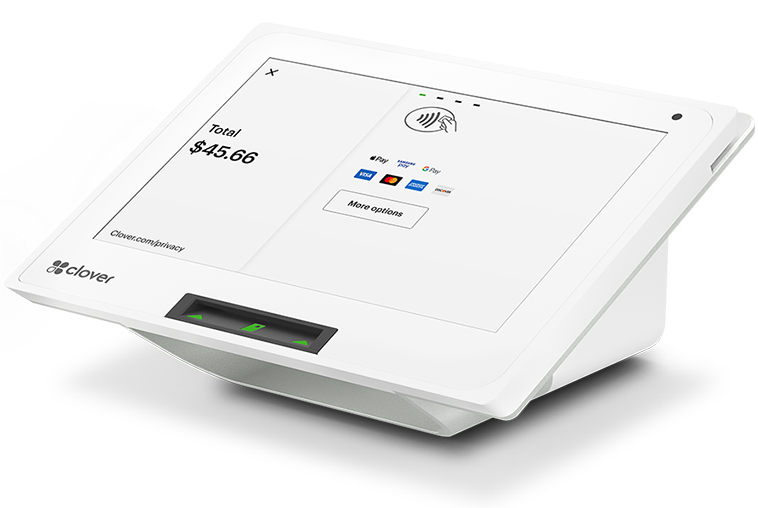
Some POS systems like Square have a built-in payment processor, making it easy to start accepting payments. Meanwhile, others like Clover have ready integration tools to choose your payment processor.
Payment processing services come in many forms and vary depending on the business type. Some retailers only need a simple in-person checkout service. Others require digital invoicing with an embedded checkout form and the ability to accept remote payments. Online businesses will look for a payment processing service that can integrate with their website.
That said, every payment processing feature should have:
- Payment gateway integration functions
- Strong fraud prevention tools
- PCI-compliant data protection features
5. Security
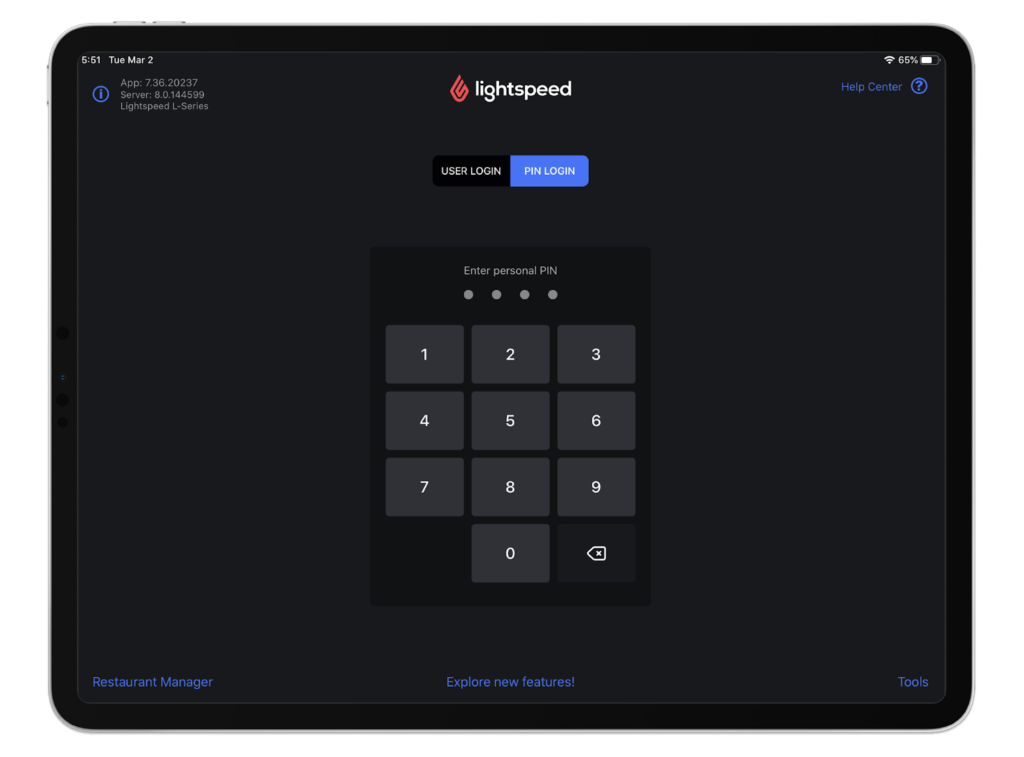
POS security features include everything from PIN-protected access and cash tracking in registers to malware protection. Most POS software is equipped with passwords and can receive automatic security updates from the provider. There should be regular prompts to change PINs and passwords, as well as records of user logs whenever the POS system is used.
6. Reporting

Every POS software should have reporting features and pre-built reports, such as sales by category, at no additional cost. Some systems include customization options such as creating various filters and automations for scheduled reports. Inventory updates, such as inventory levels and low stock reporting, are particularly crucial, and with the combination of sales records, the software can generate analytical data such as customer behavior. You can use information from these reports to plan marketing campaigns and personalize loyalty programs.
Additional POS features
These additional point of sale features are great because they can leverage your existing business software to streamline workflows. Some POS service providers include these features built into the software as paid plan upgrades while others make these features available with third-party software integrations.
7. Mobility
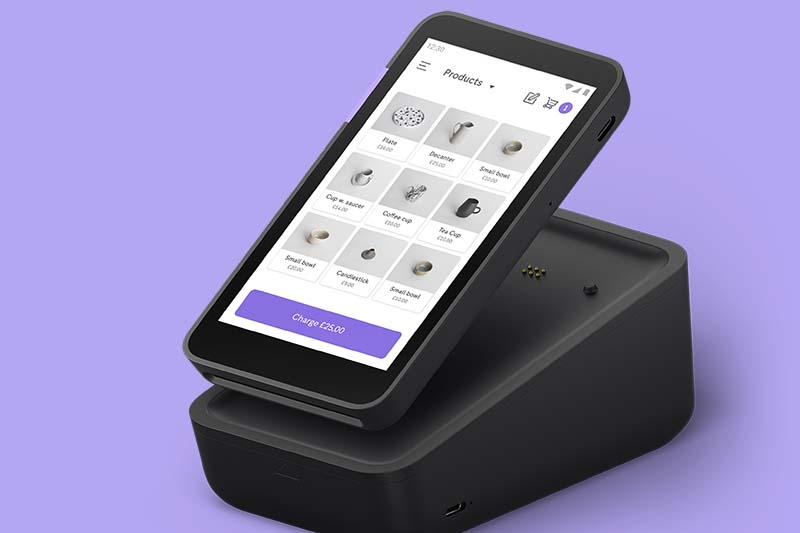
Nowadays, most POS systems can also be taken on-the-go. Most cloud-based POS systems have a mobile-optimized version of the POS software that can be downloaded to a phone or tablet, and then used to process sales anywhere within the store, at curbside, and even out at events such as trade shows, pop-up stores, and farmer’s markets. Sales and inventory records are synced to prevent sales of sold-out and out-of-stock items.
Mobile-based POS software is very common nowadays. Most popular POS providers even have proprietary hardware to integrate tablets and iPads into a storefront checkout setup.
Read more: Our recommended mobile-based POS systems and POS systems that run on tablets
8. Website builder

A website builder is primarily used by ecommerce businesses. However, with access to online websites becoming more simplified, most businesses nowadays venture into online sales to maximize their sales and expand their customer base. Shopify is primarily an ecommerce platform but also offers POS software that connects seamlessly with its ecommerce software. Providers like Square and Clover provide website builders integrated with their POS software.
9. Marketing
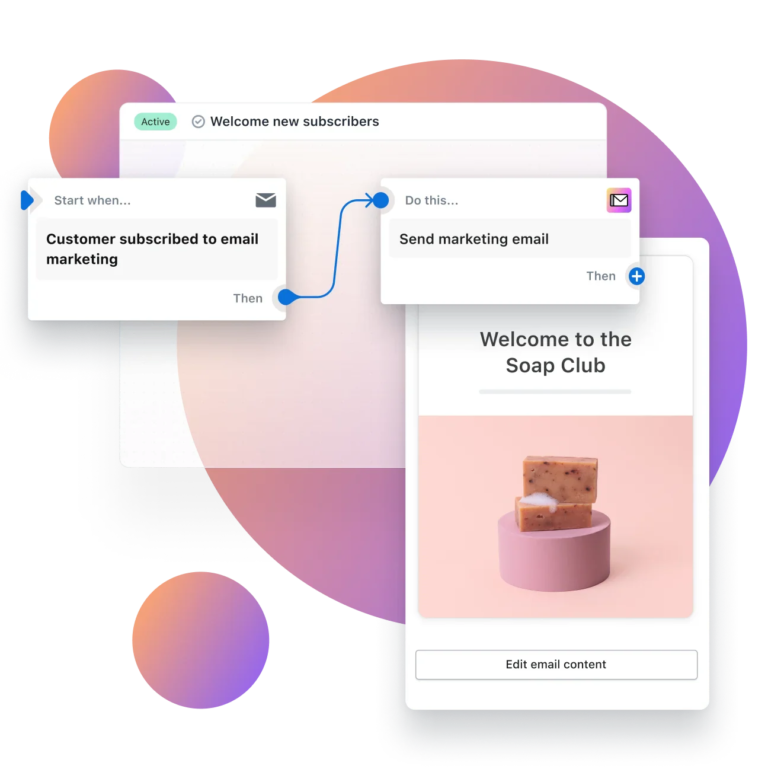
Marketing tools are one of the most popular POS add-ons. These typically include tools to create email campaigns, abandoned cart messages, and SMS text messages to welcome new customers, promote deals, and advertise new products.
By connecting CRM data, many POS systems can personalize these marketing messages based on previous purchases, buying behavior, and data like birthdays.
10. Loyalty and rewards
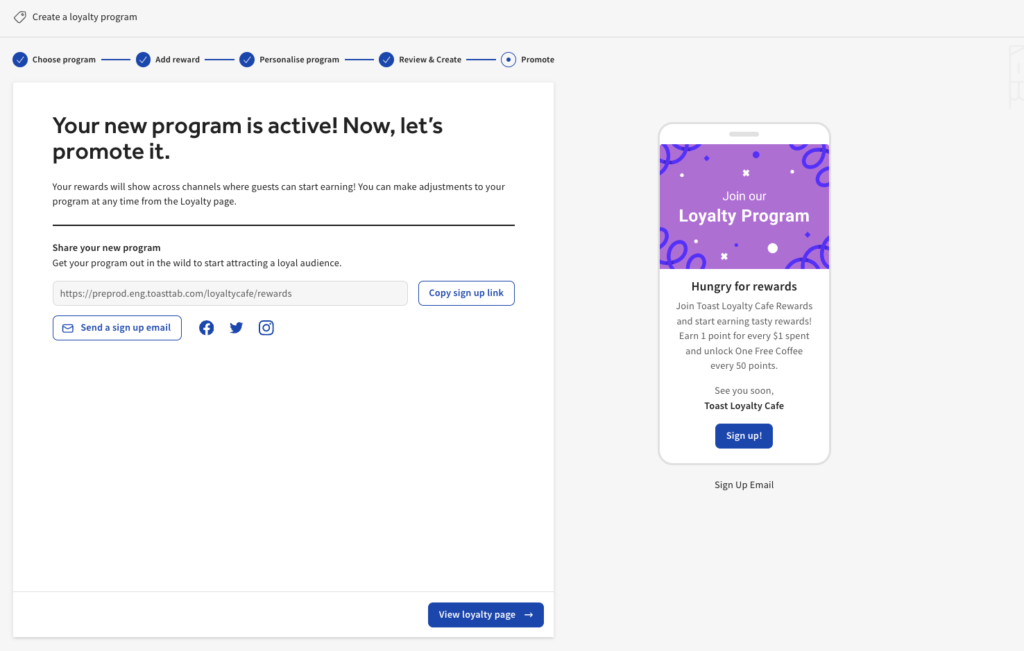
Loyalty and rewards programs are another POS feature designed to help you build a customer base by keeping customers engaged after a sale. Businesses can create personalized loyalty and rewards programs for customers by incorporating purchase histories and payment method data stored in the POS. Note that not all POS software offers this feature; however, integrations with loyalty and rewards platforms are often available.
11. Omnichannel selling
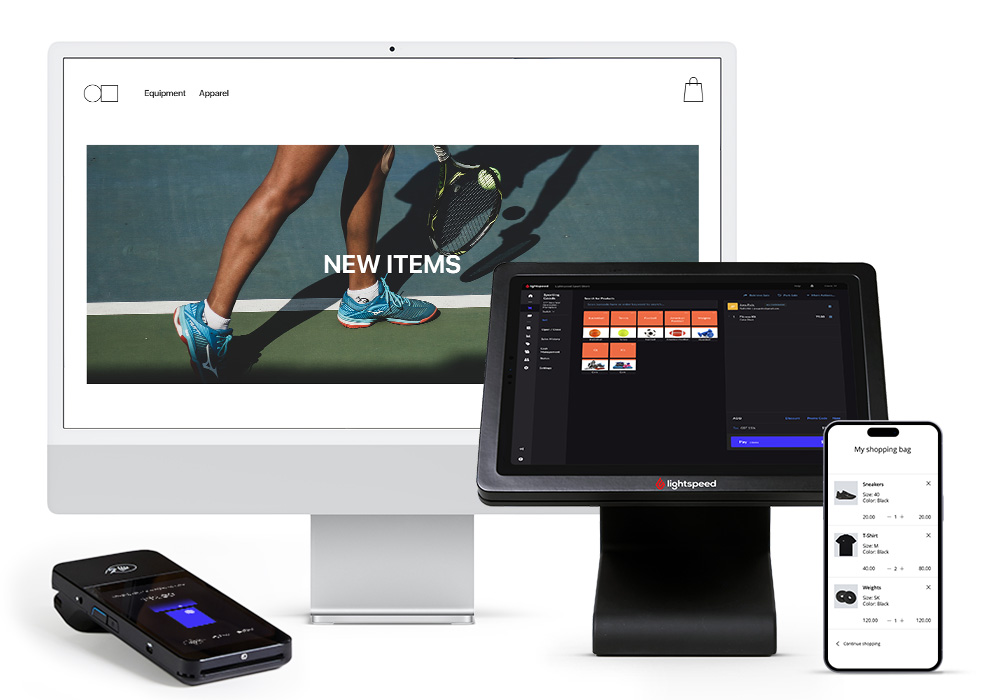
Omnichannel selling allows businesses to sync POS information from multiple sales channels, including storefront, online, mobile, and virtual terminal. This means every change in inventory and customer information, regardless of sales channel, is available in real-time. Omnichannel selling then prevents sales of out-of-stock items. It also helps boost customer experience with real-time access to rewards and loyalty points.
Read more: Access omnichannel selling tools with the best cloud-based POS on the market.
12. Employee management
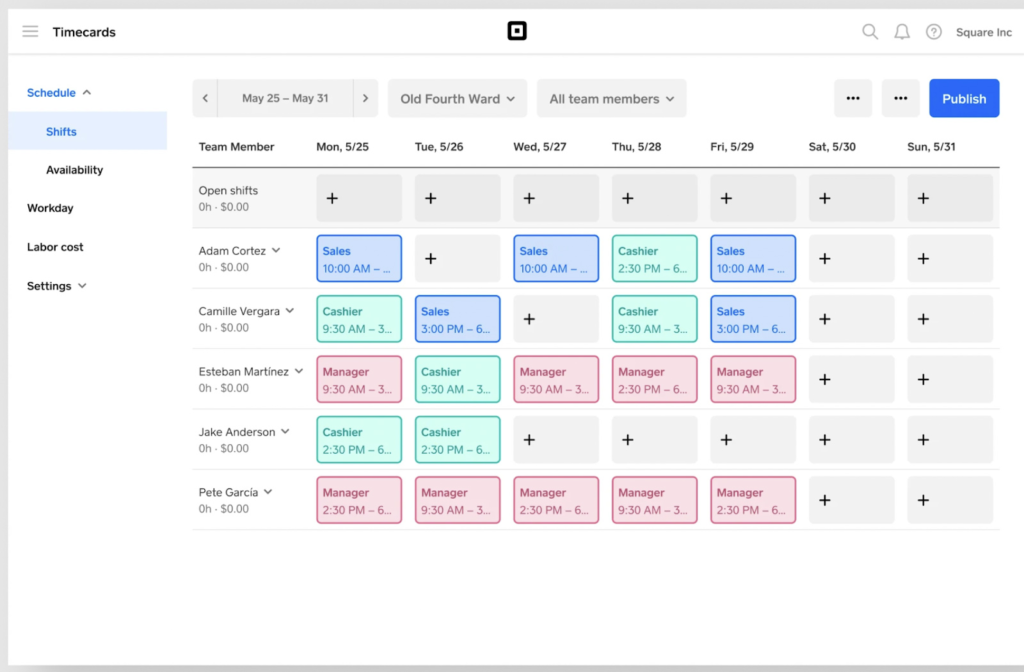
For businesses with sales staff, integrated employee management makes it easier to monitor performance. Employee logins on the POS system become a digital timecard, and every sale while logged in becomes a key metric to evaluate employees. Some POS providers even go the extra mile by offering an integrated mobile app where the staff can view their schedule, request shift changes, and even view their compensation and benefits.
13. Payroll
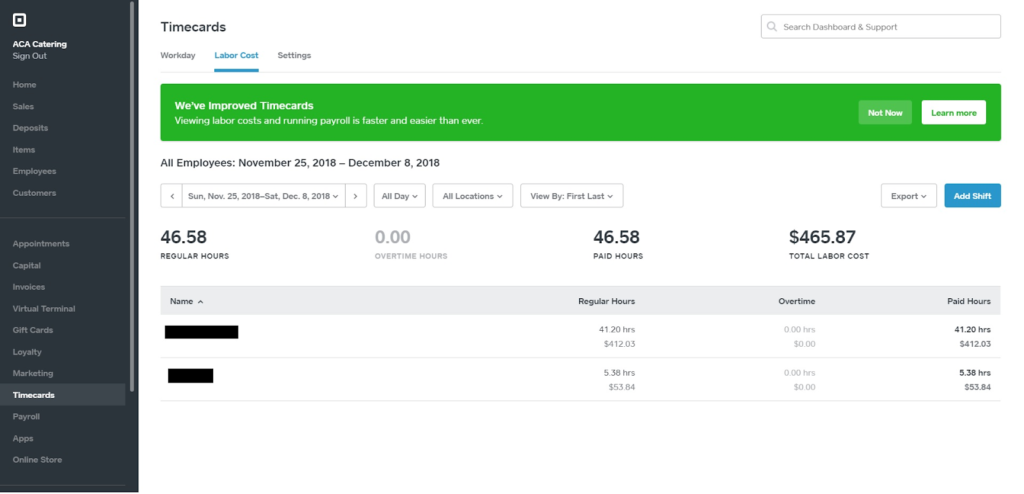
Payroll is a great addition to POS software, particularly if the system already supports employee management. With an integrated payroll function, businesses can pull information directly from employee attendance and performance records to generate payroll reports automatically. It can also automate tax computation and reporting. The best POS payroll tools support integration with accounting tools. Other providers like Square can be set up to expedite direct deposits via digital wallets like CashApp.
14. Reputation management

Social media can boost your sales or tarnish your reputation. Some POS software now offers reputation management features to help track what consumers are saying about your business. This involves monitoring online review sites like Yelp and offering on-the-spot responses to customer feedback. Reputation management features also allow businesses to identify and respond immediately to negative reviews and even build a marketing campaign with incentives for those who provide feedback.
15. Multi-store management
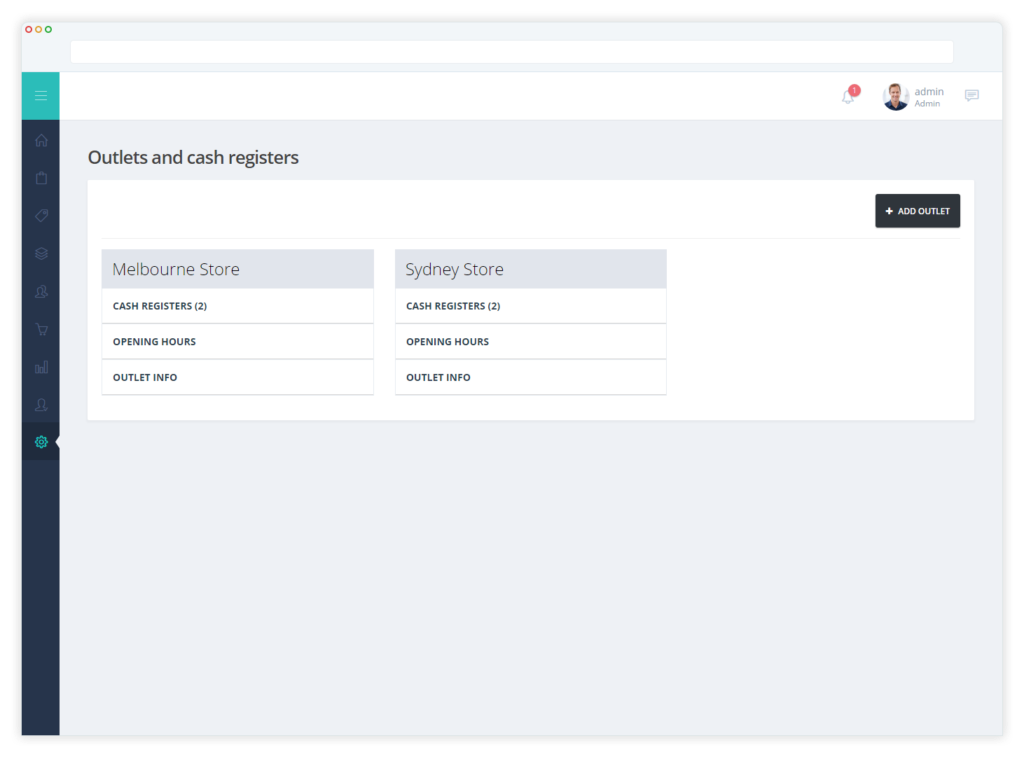
Some established businesses run multiple storefronts; To enhance omnichannel operations, businesses can add multi-store management capability. This feature allows you to manage all business data from a single dashboard, which means a 360-degree view of all store activities, as well as tools to transfer inventory, consolidate customer purchase history, and more. Most importantly, multi-store management provides access to unified reporting and analytics for timely business decisions.
16. Advanced inventory

Some businesses require advanced inventory tools. Not just for large businesses with huge volume of inventory, this is particularly true for those that sell products with complex variants such as:
- Manufacturers that handle raw materials and finished goods
- Restaurants that manage ingredients and menu
- Specialty shops that sell pre-built items but also carry spare parts for repairs and special work orders
The advanced inventory feature offers flexibility and a wide range of customization options that allow businesses to create specific categories for tracking different types of products. Typically, access to these features incurs extra fees or requires a higher-tier plan.
17. Vendor/supplier management
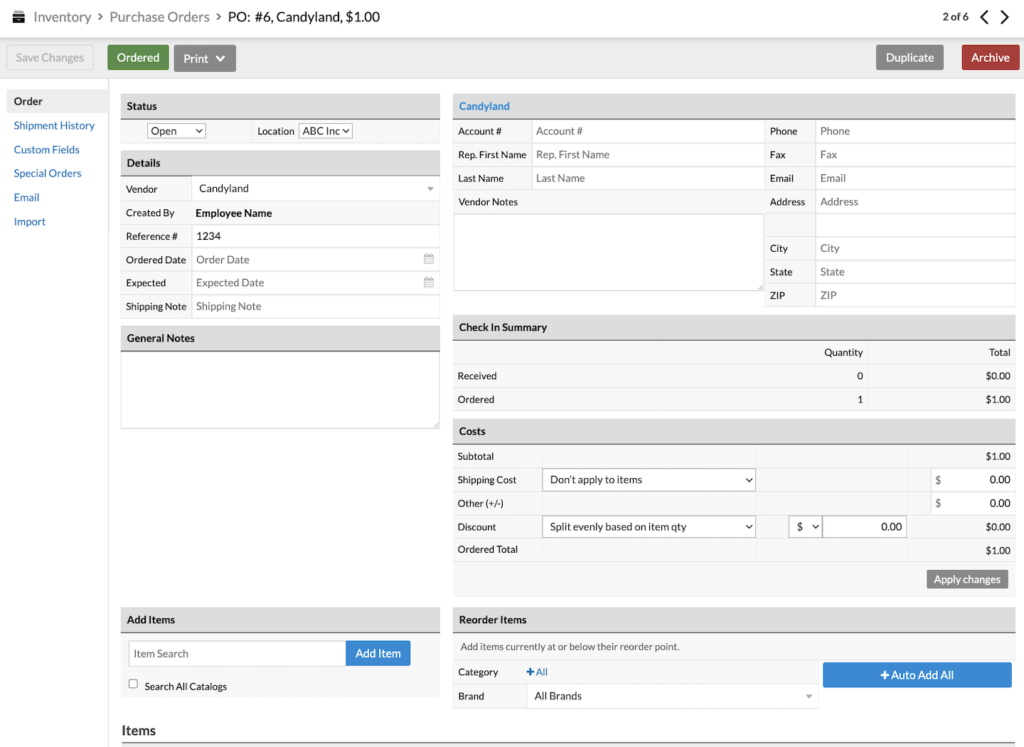
Vendor management allows you to maintain vendor contact information, keep track of purchase orders, and even send out purchase order requests directly from the platform. With this integration, you get access to low stock reports (alerts) and can set up automatic tasks, such as grouping low stock items according to supplier and preparing purchase orders from templates.
Additionally, the system can easily upload the new inventory in bulk if the vendor sends a digital invoice for the purchases. Businesses can even automatically update their account payables systems.
18. Advanced reporting & analytics
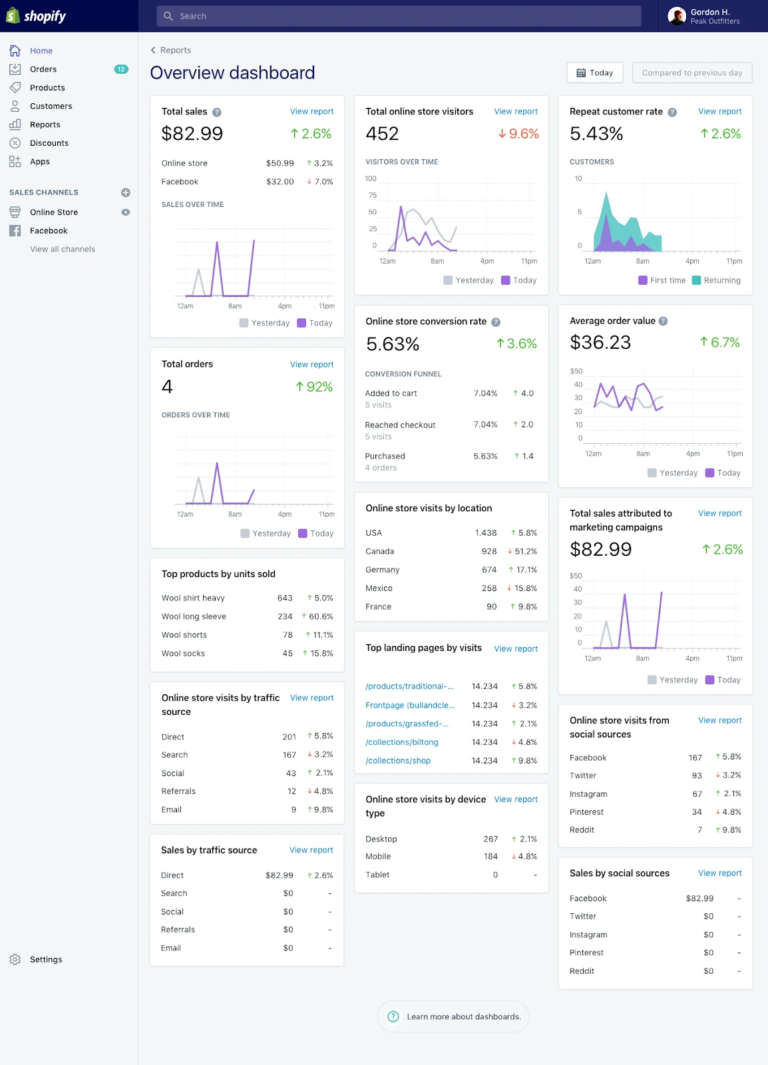
Advanced reporting and analytics functionality is particularly important for large businesses that store vast amounts of data in their POS software. This feature allows you to generate highly customized reports and manipulate data from across multiple systems to create in-depth analytics on customer purchasing trends, store, employee, and product performance. For ecommerce businesses, advanced reporting also helps analyze website performance and online store traffic.
Industry-specific POS features
Other POS features are unique and specifically used by businesses in certain industries. Below are some examples:
19. Shipping and local delivery
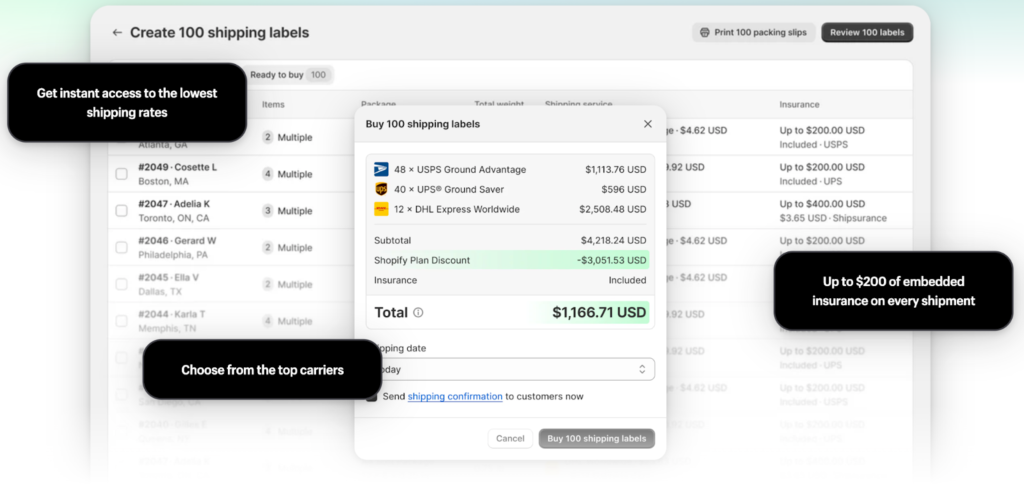
For online businesses, integrated shipping/delivery is a crucial POS feature. Providing shipping cost plus delivery information for customers creates transparency, which, in turn, helps minimize cart abandonment and chargeback claims. POS providers like Shopify include this as a built-in feature for all its POS plans. Toast POS for restaurants offers this feature both built-in and as an integration with local delivery apps for a fee. Before signing, make it a point to visit a POS provider’s list of partner integrations to see if they work with your preferred local delivery apps.
20. Kitchen display system (KDS)
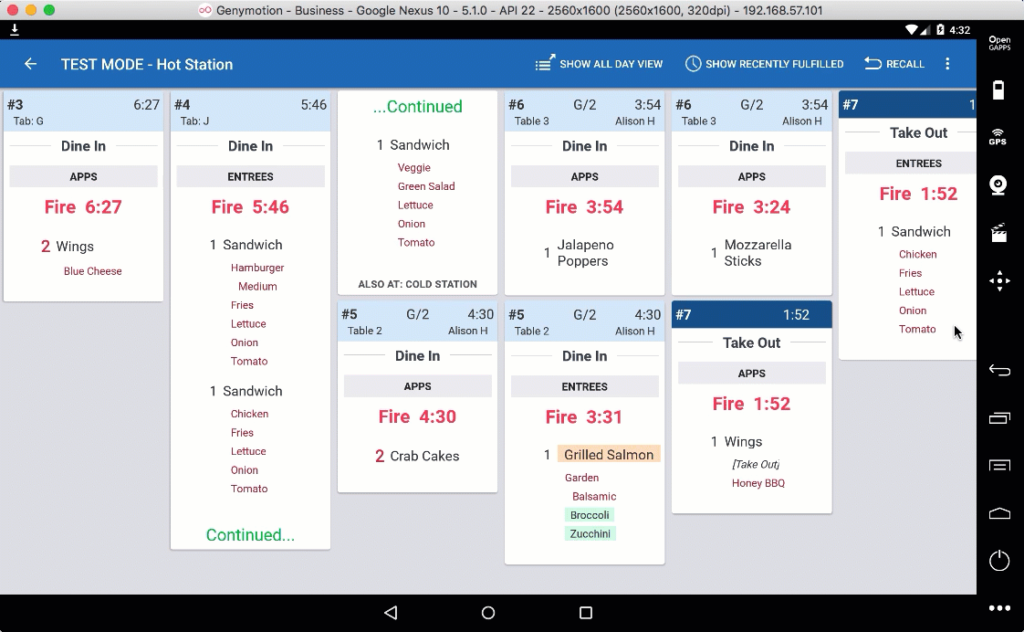
A kitchen display system is back-of-house software integrated into a restaurant’s POS system. Restaurants using a KDS can digitally send customer orders to the kitchen to show outstanding orders with additional information, such as table numbers and time, so the kitchen staff can prioritize their tasks efficiently. Most restaurant POS systems like Toast, Lightspeed, and even Square offer this feature.
21. Work order management

Work order management is a must-have for specialty shops that offer custom-made products. For some specialty shops, regular inventory features don’t cut it. You need work order tools to apply specific labor costs, assign (and track) warranties, and track unique customer requests as the order moves within the inventory system. Lightspeed Retail is popular for its work order management features.
22. Appointment setting
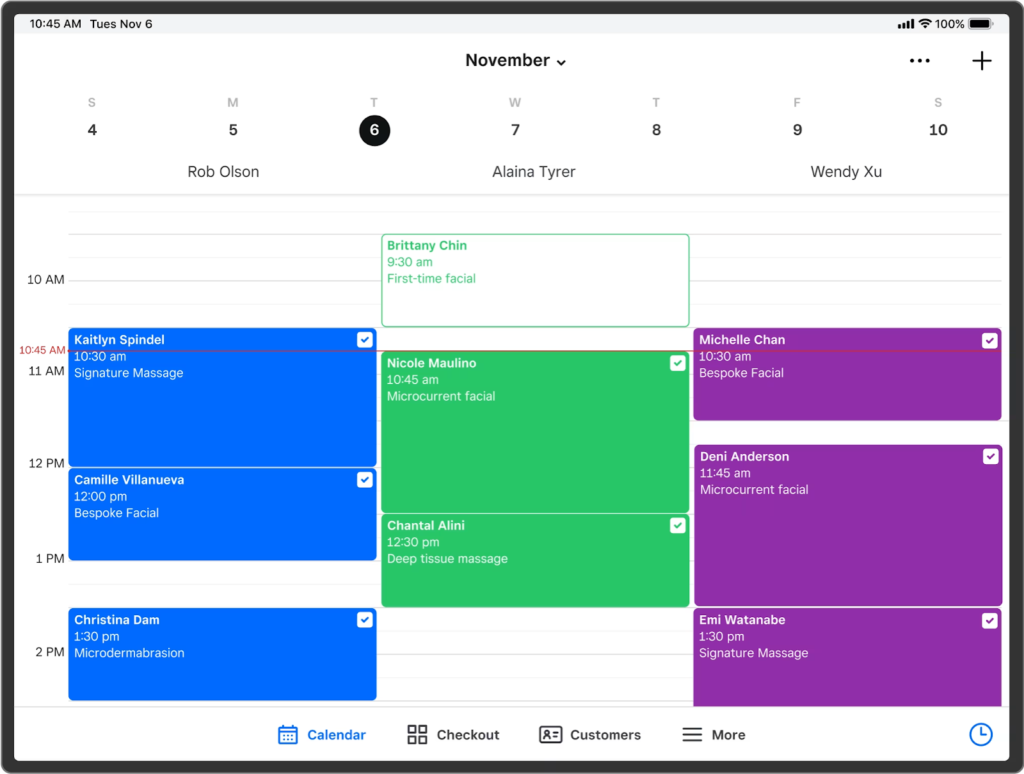
Professional and service-based businesses such as salons, spas, and clinics use appointment setting to organize client consultations. When integrated into POS software, you can create appointment forms, send requests for reservation fees, and communicate with clients within the system. If you have a website, you can create customer portals so clients can conveniently request appointments, purchase products, and even make payments online. Square offers free appointment POS software plus paid optional upgrades for additional tools such as detailed invoicing.
23.Subscription management
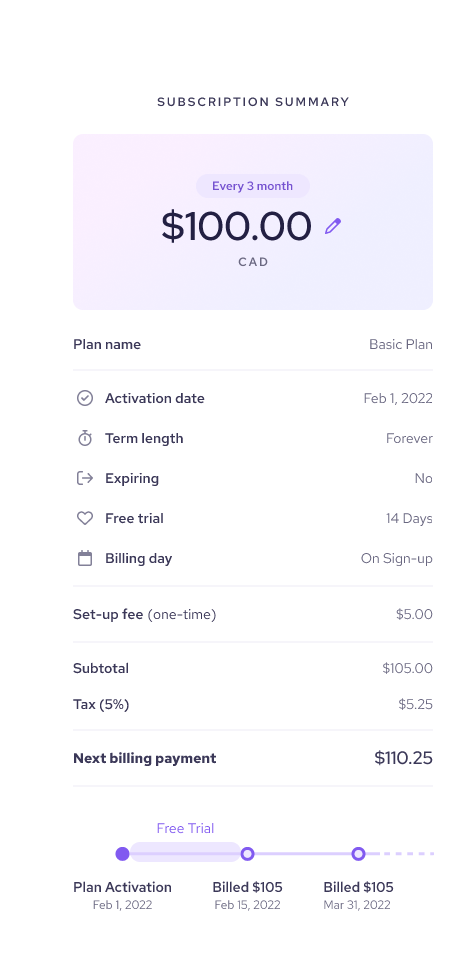
Subscription management doesn’t just refer to recurring payments. It’s also managing customers, products, and services such as utilities, streaming services, and other software. With subscription management, you are provided with tools to create subscription plans tailored to specific needs and then automate recurring invoice sends or charges to payment methods stored on file. Some retailers use subscription box models, which also require tools to build an online portal that allow customers to manage their subscriptions. Large businesses such as architectural firms use subscription management to create and even convert proposals into invoices.
24. ID verification
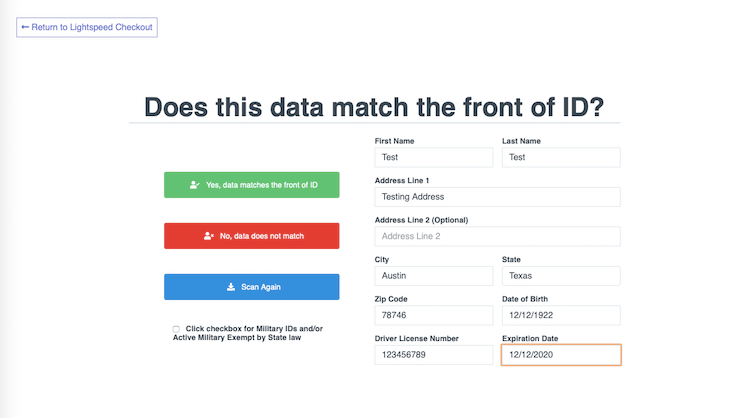
ID verification is a compliance feature for businesses that sell age-restricted (liquor, tobacco) and other regulated products such as CBD. While not a hard requirement, having an integrated ID verification feature ensures that the business complies with federal and state laws. ID verification tools are often third-party integrations from providers accredited by regulating bodies, with functionalities that vary from ID scanners to customer-facing integrated verification apps.
Choose the right POS features
Knowing which POS features will best support or enhance your business will help you choose the best POS system. Consider your current business goals and customer profiles, then prioritize based on your budget. Choosing a POS that works best with your business plan is also important. While you may need just the basics now, scalable features and in-house optional add-ons will make it easy for your POS system to grow with your business.
Also read: Types of POS systems



